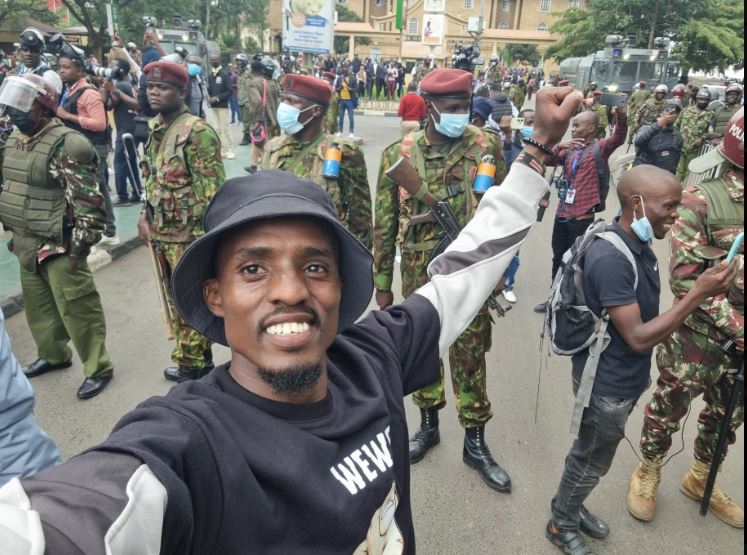By John Kamau and Andre Chibuye
In 2018, a Zambian parliamentary delegation visited Kenya to learn how to effectively fight corruption. Given the well-publicized corruption problems that Kenya has had since many Kenyans reacted with consternation, and some noted that the visit itself may have been a form of corruption.
The reaction in Zambia was more amusement with various stakeholders wondering what would come of the mission.
Though the purpose of this visit remains questionable, there is no doubt that the effect of corruption in these two countries on both the social fabric and the economy is rather obvious.
Kenya has just ushered a new government and with Zambia having elected a new regime in August 2021, what can be learnt from the development in both countries since 2018?
There have been various anti-corruption initiatives in Kenya, since 2018 that include the publishing of the National Anti-corruption Policy in 2020 which aims to provide a comprehensive and effective legal and institutional framework for fighting corruption and promoting ethics.
The period also saw an enhanced fight against money laundering through the strengthening of the Financial Reporting Centre (FRC) and the fining of banks linked to the National Youth Service scandal.
Other initiatives have included the enhanced efforts by the Assets Recovery Agency (ARA) and the Ethics and Anti-Corruption Commission (EACC) to identify, freeze and recover wealth that cannot be accounted for.
Despite the above efforts and achievements, the consensus seems to be that the fight against corruption is yet to be won and things may have gotten worse since 2018.
Many Kenyans are hoping that the new Government will fare better after retired President Kenyatta recently affirmed, he may have been too lenient on corrupt individuals.
In Zambia, President Hichilema took office with a vow to fight corruption. Since then, he has taken some steps including appointing new individuals to lead the institutions charged with fighting corruption.
A clear tone has been set by the President and his government and additional resources promised towards combating the vice.
Various cases have also been brought against those who are alleged to have benefited from corruption. Despite these and other actions, the public appears to be growing impatient with the pace at which the fight is progressing as well as the relatively low number of successful prosecutions.
All in all, it appears that the Government in Zambia is keen to fight corruption.
Given the above, various parallels and lessons can be drawn. To begin with and based on the Kenyan example, anti-corruption agencies if properly enabled and facilitated can make noticeable gains in identifying and punishing corruption.
The scale and magnitude of the problem is however so big that whereas these efforts help, they may not be sufficient to drive a sense of real change.
For instance, the EACC in Kenya had achieved only 289 convictions between 2003 and 2019, an average of less than 20 a year. Similarly, the Anti-Corruption Commission (ACC) in Zambia reported only 12 convictions from 182 investigations authorized in 2020.
Kenya and Zambia probably need to borrow a leaf from Rwanda where prosecution of economic crime cases seems to be more effective.
Based on the number of scandals that have been identified in less than a year and reported as being under investigation in Zambia, it appears that finding corruption and initiating investigations is not hard where there is political will.
The successful investigation and prosecution of these matters are however unfortunately not as easy as the Kenya example shows. There is therefore a need to develop an effective investigative and prosecutorial strategy as well as strengthen the Judiciary.
The successful investigation and resolution of economic crimes cases is also vital in saving resources as the Anglo-leasing case in Kenya proved.
Despite the general public consensus that certain ‘Anglo-Leasing’ firms were irregularly awarded contracts between 1997 and 2004, two of these Firms obtained judgments against the Kenya Government in Geneva and London. The Kenya Government was thus forced to make payments to the Firms, as recently as 2020.
According to the then State House spokesperson, it was estimated that the annual costs of non-settlement of the judgments would be KES 21 billion (almost USD 180M), being the cost of higher interest rates on borrowing for both the public and private sectors in Kenya.
Another important lesson that seems to be coming out of Kenya is the relatively better success in the recovery of illicit wealth.
The economic crime and money laundering laws in Kenya set a lower threshold of proof for the recovery of assets than it does for criminal convictions.
The EACC and ARA have been reporting successes in the freezing and recovery of assets. The agencies in Zambia also had an early success story in 2021 where the Forfeiture of Proceeds of Crime Act was used to reach a settlement that saw the return of funds and a house to the State.
All said it would seem that setting the right tone and resolutely pursuing the corrupt as seems to be the case in Zambia is indeed necessary and useful.
Though still early in its days, indicators such as the performance of the Zambian Kwacha, suggest that there is renewed confidence in the economic management of the Country.
Public declarations and identification of graft will however not be enough if not followed up with effective and efficient investigation and prosecution that leads to timely convictions.
Cover image used under Pixabay license.
John Kamau is an Associate Director, Forensics Advisory at PwC Kenya and Andrew Chibuye is a Country Senior Partner at PwC Zambia.



